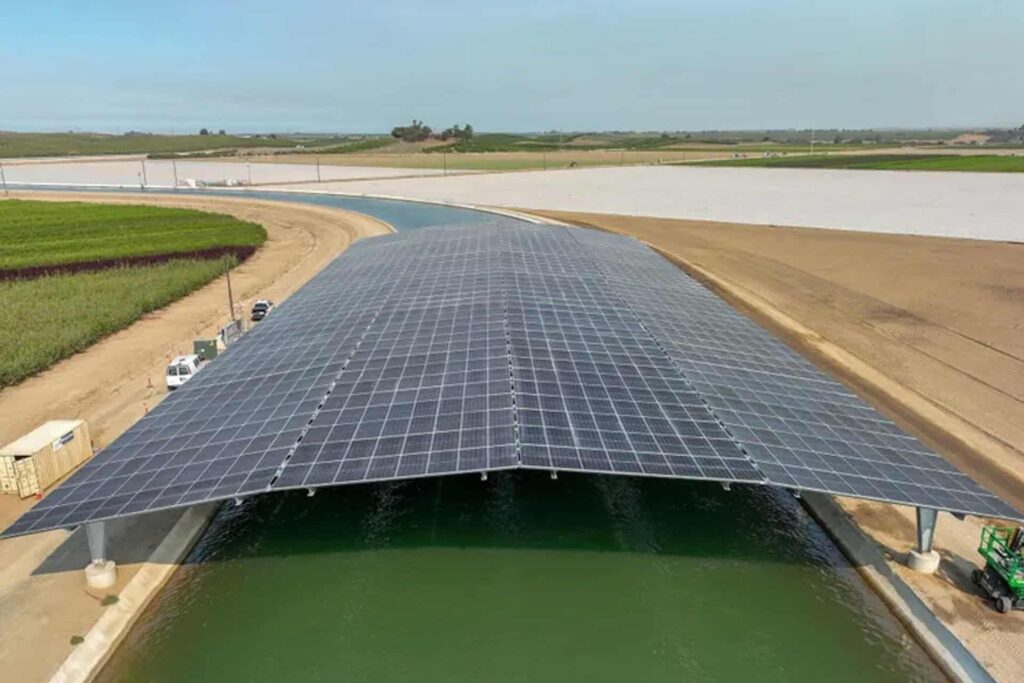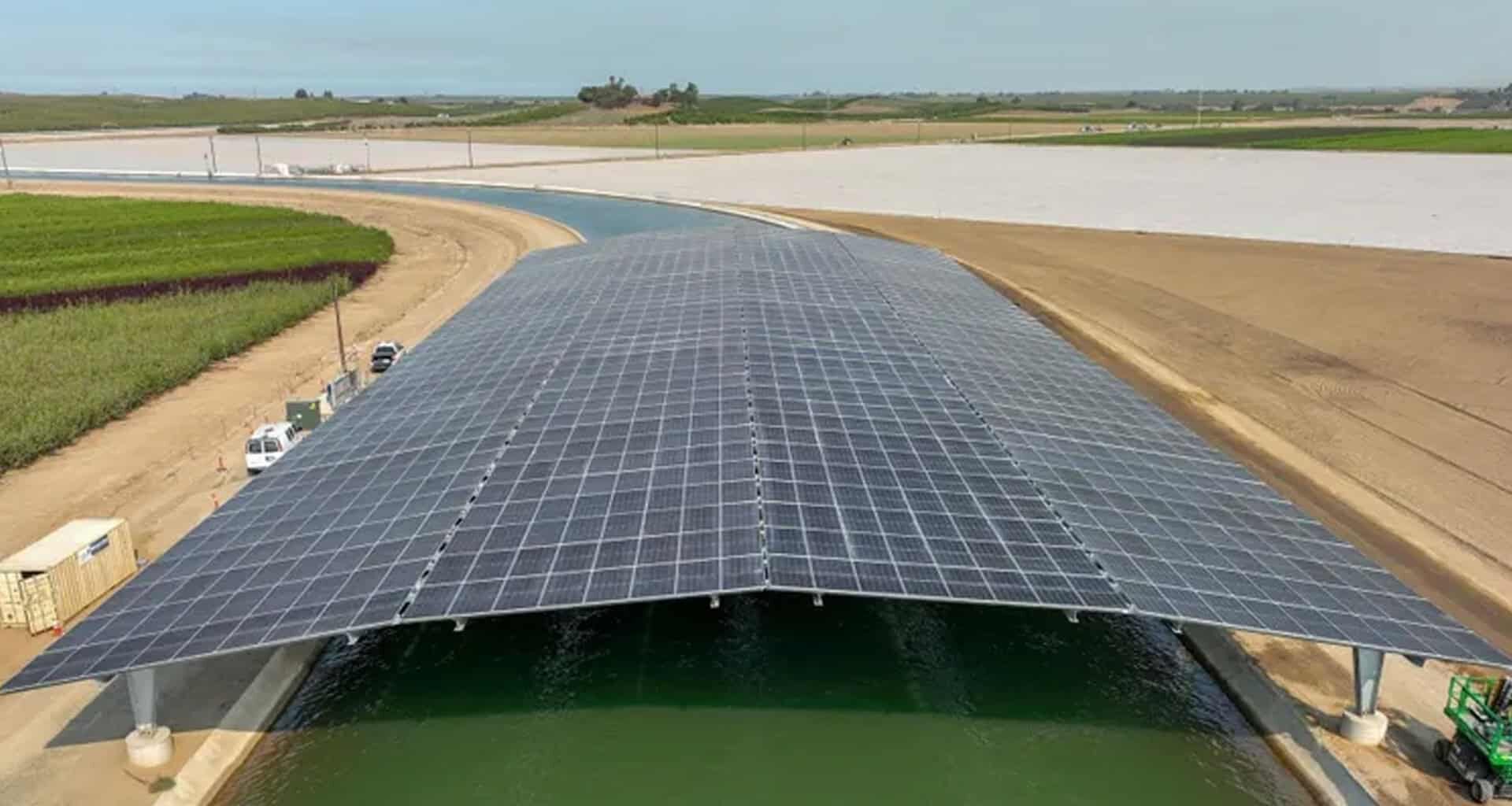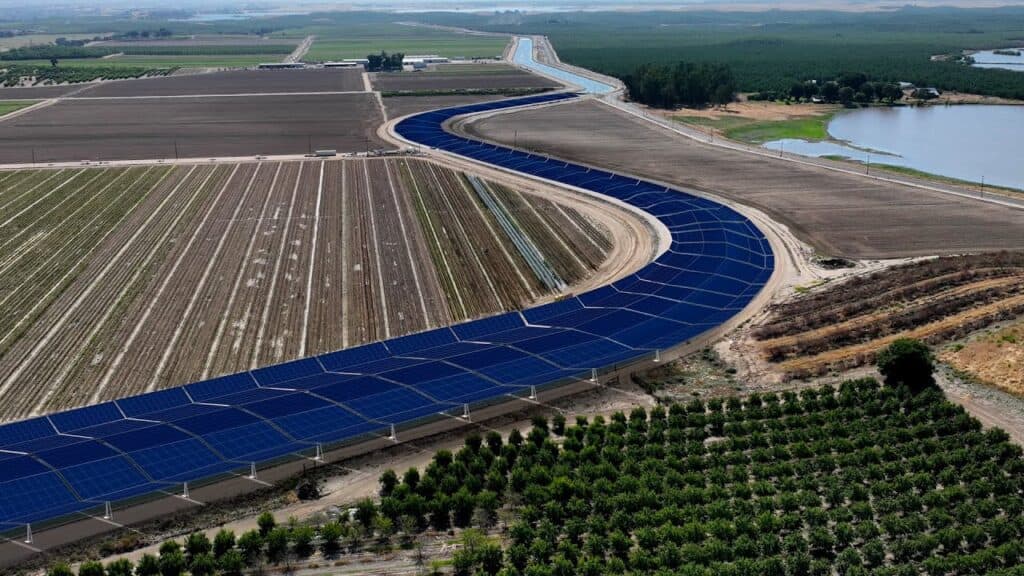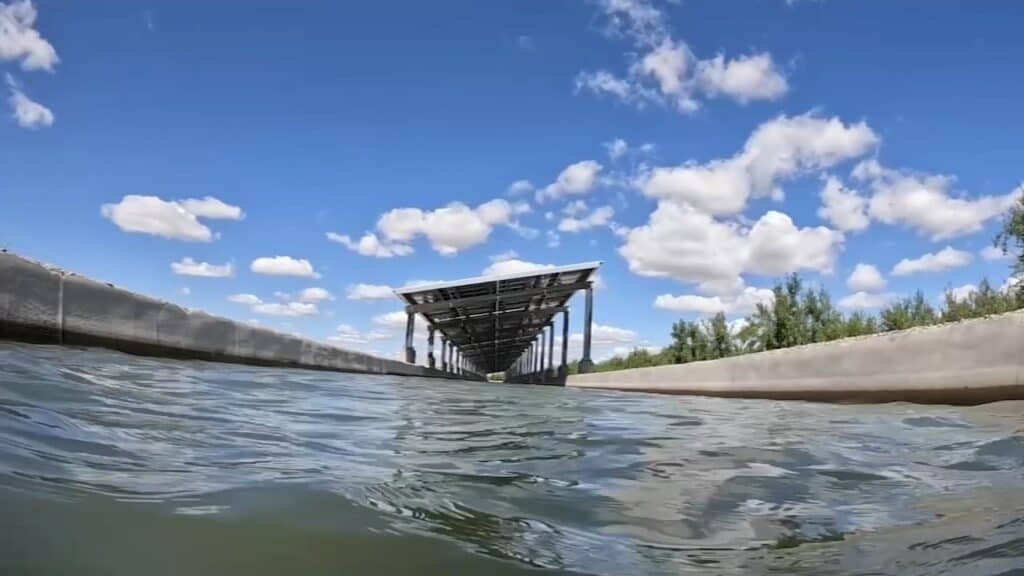In California’s Central Valley, an ambitious project is transforming the way we think about renewable energy by installing solar panels across canals instead of on land. The $20 million pilot, called Project Nexus, has turned sections of the Turlock Irrigation District (TID) canal network into clean electricity generators.
 The newly built canal-top solar system in California. Image credits: Turlock Irrigation District
The newly built canal-top solar system in California. Image credits: Turlock Irrigation District
Completed in August 2025, this 1.6-megawatt installation is the first of its kind in the state and only the second in the United States. The idea behind this project is simple but powerful. Instead of covering farmland or natural habitats with solar farms, why not use the open space above canals to produce electricity?
This approach not only generates renewable power but also conserves water in a drought-prone state—a win-win for both energy and the environment.
Creating a practical canal-top solar system
Project Nexus kick-started earlier this year in two stages. The first, a 20-foot-wide section, was completed in March 2025. The second, a much larger 110-foot-wide canal canopy, was finished and switched on in late August.
Together, the two spans form a 1.6-MW power plant that now feeds electricity directly into TID’s grid. The system uses slightly different canopy designs at each site to test how structure and width affect performance and cost.
The project draws inspiration from a smaller, earlier effort built in Arizona’s Gila River Indian Community, where a 1.3-MW canal-top solar system went online in 2024. Engineers found that solar panels over water tend to stay cooler than those on land, and these cooler panels can produce more electricity because high temperatures usually lower a panel’s efficiency.
That cooling effect is only part of the benefit. The shade from solar panels helps reduce water evaporation and limits algae growth, which can lower maintenance costs for canal operators.
Moreover, according to a study, if all 4,000 miles of California’s canals were covered with panels, the state could generate enough electricity to power around two million homes each year, while conserving enough water to supply another two million homes annually.
The same study suggested it could also save up to 50,000 acres of land by placing solar panels over existing infrastructure instead of building new ground-based solar farms.
“Why disturb land that has sacred value when we could just put the solar panels over a canal and generate more efficient power?” David DeJong, an expert on water canal systems and director of the Pima-Maricopa Irrigation Project, said.
Making solar power more sustainable than ever
Researchers at the University of California, Merced, are now collecting real-time data on Project Nexus to measure its exact performance and confirm how much water and energy it saves. Furthermore, the company that is installing the canal-top panels, Solar AquaGrid, is leading efforts to expand the concept across the state.
Moreover, teams from countries such as Spain, Romania, Vietnam, Brazil, and Ukraine have already shown interest in adopting the technology after learning about California’s success. If proven successful, solar canals could help solve two of California’s toughest challenges: energy shortages and water loss — all while avoiding the land conflicts that often delay renewable projects.
By using space that already exists, this method could speed up clean-energy development without disturbing farmland or natural landscapes. Since canals often run close to existing power lines, connecting the systems to the grid is also easier and cheaper than building new utility-scale solar farms in remote areas.
However, solar canals also have their challenges. For instance, building these structures is more expensive and technically complex than placing them on the ground, since the spans require extra steel and concrete for support.
It was due to the high cost that Arizona’s Salt River Project recently decided not to pursue a pilot after comparing expenses with conventional solar systems. Also, wider canals may need underwater supports, which could disrupt water flow.
Even so, Project Nexus is already proving that the benefits could outweigh the challenges.
The initial investment is “definitely higher, but it can actually be really fast as a project. By the next year, you can have really cheap electricity, and that gives (irrigation districts) stability over the 30-year life of the project,” Ben Lepley, an expert on canal-top solar systems and founder of sustainable construction design company Tectonicus, said



